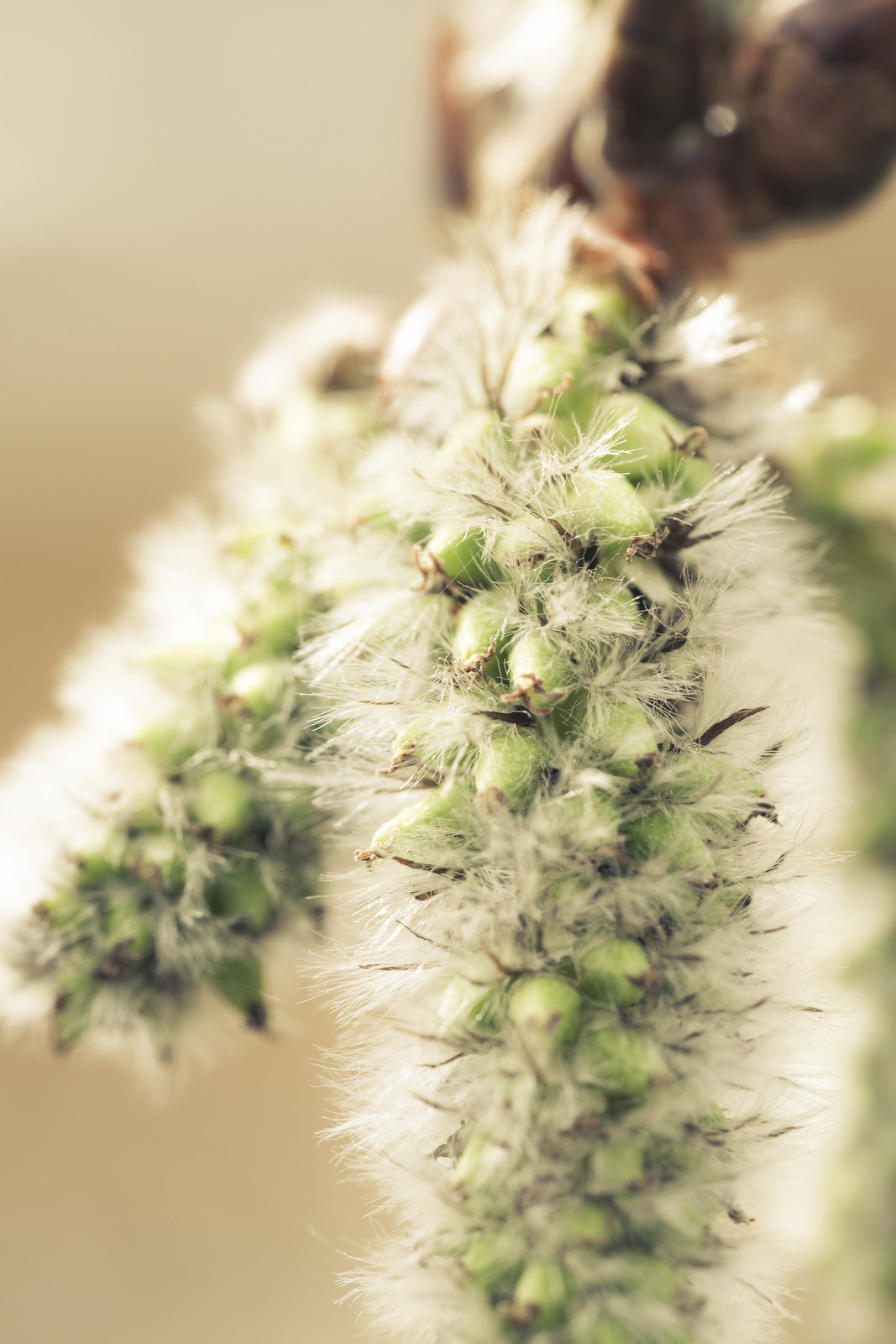Quaking Aspen : How Does It Grow?
A unique feature of the quaking aspen is that the leaves and the bark carry out photosynthesis. This allows the tree to continue producing sugar for energy even when it has shed its leaves in the winter!
The flowers of the quaking aspen are called catkins. These catkins appear in April or May and are green and fuzzy. The catkins reach a length of approximately 10 cm when mature and can have several dozen of the green capsules that you see in the picture. Each of these capsules contain about 10 small brown seeds.
The more common way that quaking aspens reproduce is asexually, creating what are called clones. The aspens send up new stems from an existing root system to grow a new tree. Clone is the terms for the root system and all of the stems together.
Above ground it may look like there are many different trees, but the different stems are actually a part of one organism. You can tell when a tree is part of a clone group because the leaves on all of the trees in the clone will turn color at the same time in fall and will flower and the same time in the spring.
There is a grove of quaking aspens in Utah that is considered to be the largest living thing on Earth. The single root system has nearly 50,000 stems protruding from it. This organism covers over 100 acres of land and if we weighed it, it would weigh around 6,000 tons!
While individual trees tend to live for around 50-60 years, because of the cloning capabilities, telling the age of a quaking aspen can get a little complicated. When one stem dies, it is replaced by new growth, so the clone can live for tens of thousands of years!

